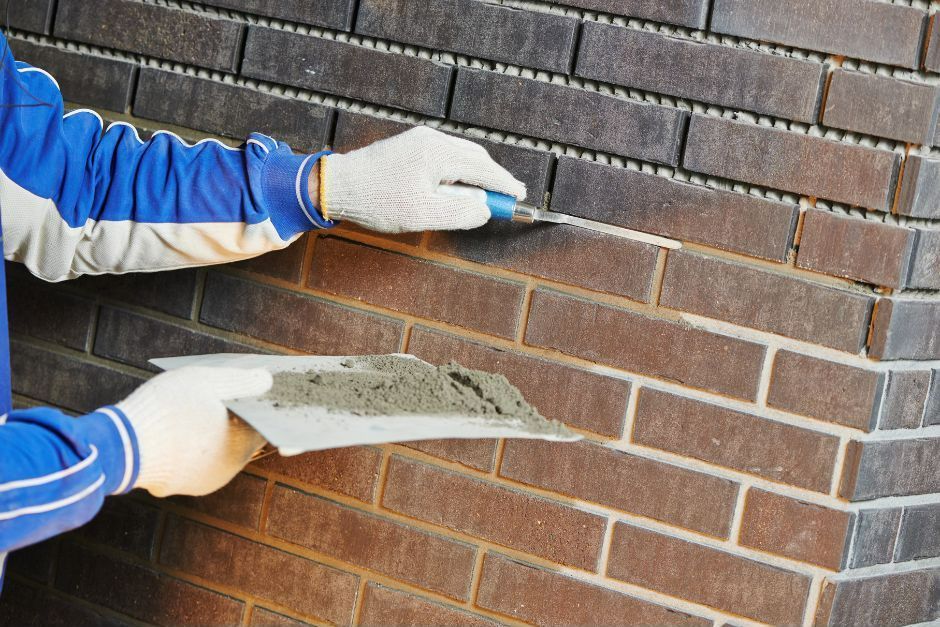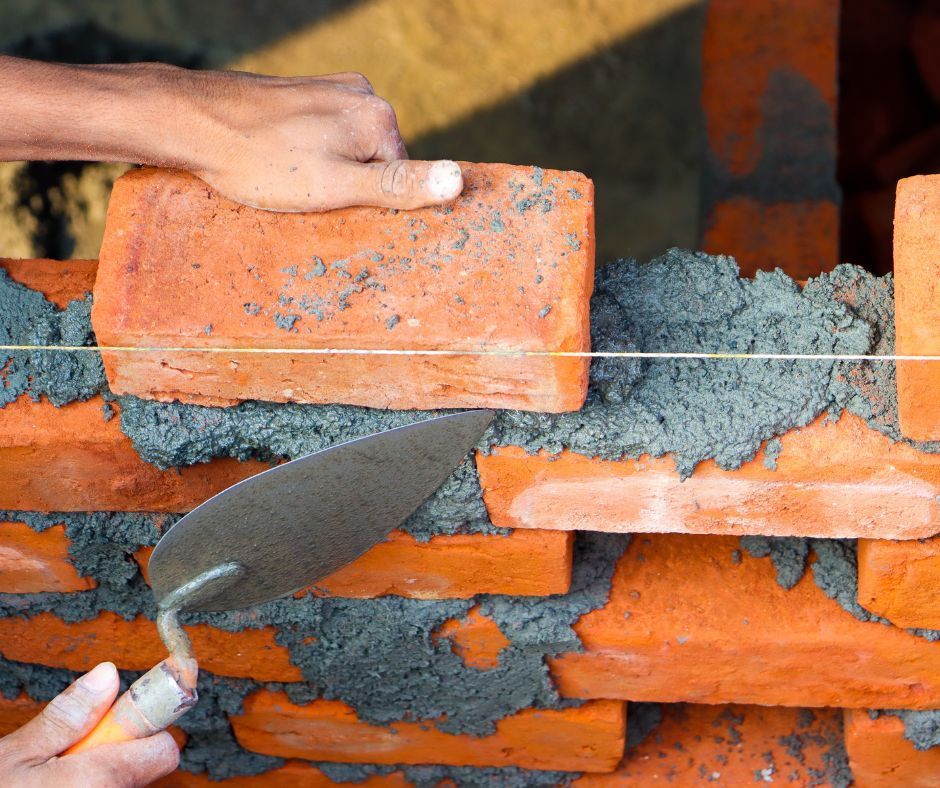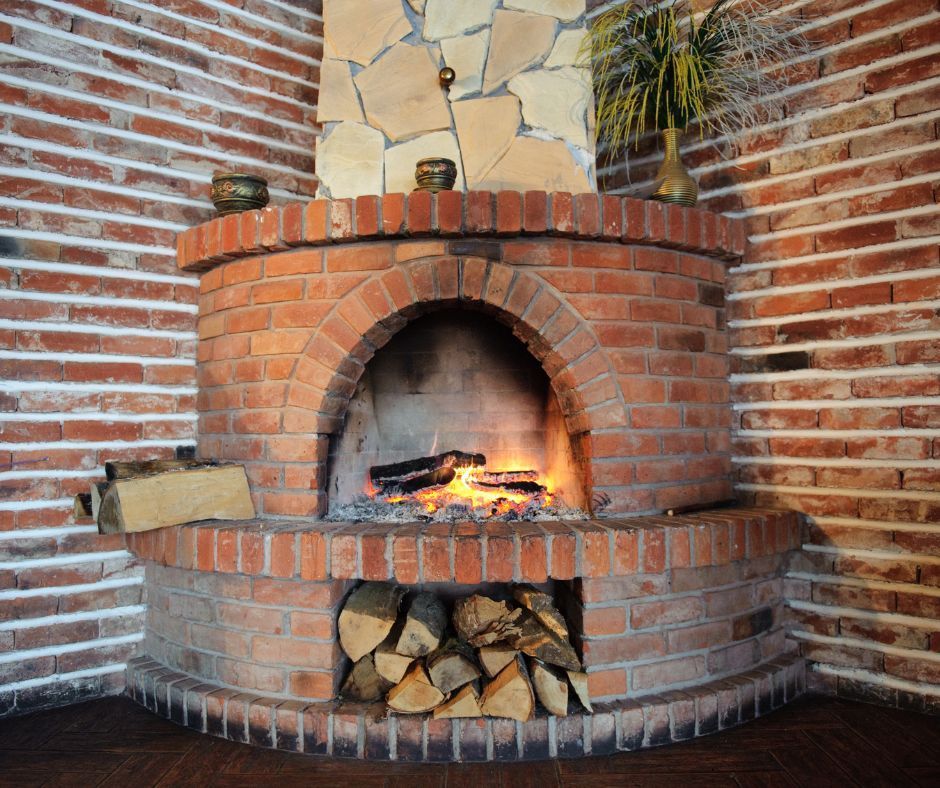Brick Mortar Repair: How Professionals Restore Your Brick Wall
Brick walls are admired for their durability and timeless appeal, but over time, the mortar—the substance holding those bricks together—can start to wear down.
Brick-mortar repair is essential for keeping these structures in good condition. Whether you're dealing with crumbling mortar or tiny cracks, addressing these issues early can prevent larger, costlier structural problems down the line.
In this post, we’ll explore brick and mortar repair, its importance and how professionals expertly restore brick walls to their former strength and beauty.
What is Brick Mortar Repair?
Brick mortar repair refers to the process of fixing damaged or deteriorated mortar between bricks, maintaining the wall's structure and appearance. Over time, weather, moisture, and general wear and tear cause the mortar to weaken, leading to cracks and gaps.
These gaps can allow water to seep in, which then leads to more severe issues like mould, rot, or even structural damage. The goal of brick-and-mortar repair is to restore the integrity of the wall and ensure it stands strong for years to come.
Brick Mortar Repair Methods
Two common methods used in mortar repair are tuckpointing and repointing. Tuckpointing involves adding fresh mortar strips to enhance the overall look and definition of the brickwork, while repointing is the comprehensive removal of old, crumbling mortar and replacing it with new material - tuckpointing can also be done after this process if that is the look you desire.
Both methods play a crucial role in preserving the strength and aesthetics of brick masonry, especially in heritage buildings, where maintaining the original appearance is key.
Why Brick and Mortar Repair is Important
Your brick wall may seem strong and invincible, but the mortar between the bricks is what really keeps everything together.
Prevents Structural Damage
When the mortar wears down or cracks, it weakens the overall structure, causing bricks to shift or even fall out of place. Over time, this can lead to serious structural damage, which can be incredibly expensive to fix.
Repairing brick mortar as soon as you notice wear keeps your walls strong and stable, maintaining the integrity of your home or building. It's like giving your building a little extra armour to protect against everyday wear and tear.
Avoids Moisture Penetration
One of the sneakiest enemies of any building is moisture. When the mortar is cracked or missing, water can easily seep into the gaps between bricks. Once water gets in, it’s only a matter of time before you start seeing issues like mould, mildew, or wood rot.
By repairing your mortar, you're sealing those cracks and preventing water from causing long-term damage. It's a simple fix that can prevent much bigger problems down the road.
Enhances Aesthetic Appeal
There’s no denying that well-maintained brickwork looks beautiful, especially on older or heritage buildings. Mortar repair, whether through tuckpointing or repointing, not only restores the wall's strength but also its original charm. Cracks and gaps in the mortar can make even the most stunning brick building look run-down or neglected.
With fresh mortar, your walls look clean, polished and well-cared for. This improvement doesn’t just keep your building structurally sound—it keeps it looking its best, too. And let’s face it, we all love a little curb appeal.
Increases Property Value
Whether you’re planning to sell your property or just want to maintain its value, regular mortar repair plays a key role in boosting your home’s worth. Buyers are naturally attracted to homes and buildings that are well-maintained, and nothing says "well-cared-for" like solid, fresh brickwork.
Even if you're not selling, investing in brick mortar repair now can prevent costly repairs later on, which keeps your property's value intact. A little maintenance today can translate into a significant boost in value when it's time to sell.
Extends the Life of Brickwork
Bricks are incredibly durable—many heritage buildings are still standing after centuries! However, the secret to their longevity often lies in well-maintained mortar. Over time, if the mortar is neglected, it can cause the bricks themselves to crack or shift, reducing the lifespan of the entire structure.
Properly repaired mortar ensures that your brick walls remain strong and durable for decades to come. This is especially important for heritage buildings, where preserving the original materials and appearance is crucial to their value and historical significance.
Saves on Costly Repairs
One of the biggest advantages of staying on top of brick and mortar repair is the money it saves you in the long run. Small cracks and deteriorating mortar might not seem like a big deal at first, but if left unchecked, they can quickly turn into major problems.
By addressing mortar issues early, you're preventing these larger, more expensive repairs from becoming necessary. It’s the classic case of a stitch in time saves nine. Regular maintenance helps you avoid unexpected and hefty repair bills down the line.

How Do Professionals Conduct Brick Mortar Repair?
When it comes to repairing brick mortar, professionals follow a systematic approach to ensure that every step is done right. Let’s take a closer look at how they work to restore your brick walls to their former glory.
Chip Out Loose and Old Mortar
The first step is removing loose or deteriorating mortar to prevent further damage. This clears the way for a fresh, solid bond and ensures the integrity of the entire wall. By removing the old mortar, they create a clean slate for the new material.
Clean the Joints
Once the old mortar is out, it’s time for a thorough cleaning. Professionals meticulously clean the joints to remove any debris, dust, or loose particles. This step is important because a clean surface allows the new mortar to bond properly, ensuring a long-lasting repair.
Wet the Brickwork
Next, the brickwork is lightly wetted. This may seem simple, but it plays a critical role in the repair process. Wetting the bricks prevents them from absorbing moisture from the new mortar too quickly, which could lead to weak bonding.
Mix the Mortar
Now, it’s time to mix the mortar. Professionals prepare a high-quality mix that matches the existing mortar in colour or texture. The right blend ensures that the repair not only functions well but also looks seamless. A good match is essential, especially for heritage buildings where maintaining the original appearance is necessary.
Fill the Joints with Mortar
With everything prepped, professionals start by filling the horizontal joints first, carefully pressing the mortar into the gaps between the bricks. This step requires precision and expertise; if done hastily, it can lead to uneven surfaces. Properly filled joints help maintain the structural integrity of the wall, ensuring that everything stays in place.
Fill the Vertical Joints Last
After addressing the horizontal joints, it’s time to tackle the vertical joints. Filling these last ensures that all areas receive complete coverage. This step rounds out the repair, ensuring no gaps are left behind.
Rake the Joints
Once the mortar is in place, professionals rake the joints for a uniform appearance. This not only enhances the aesthetic but also helps with proper bonding. A well-raked joint allows for better drainage, reducing the chances of moisture buildup that can lead to future damage.
Clean the Bricks
The last step is to clean off any excess mortar from the brick surfaces. This final touch is what transforms a repair job into a work of art. With the bricks shining and the mortar fresh, your wall looks revitalised, ready to withstand the test of time.
Common Mistakes When Repairing Brick Mortar
Using the WrongType of Mortar
One of the most significant missteps in mortar repair is using the incorrect type of mortar. Each type of brick and masonry requires a specific mortar mix to ensure proper bonding. When the mortar is not compatible with the original materials, it can create an imbalance, causing bricks to crack or break over time.
It’s essential to select the right type of mortar that matches the original mix in terms of strength, colour and flexibility. Professionals will always conduct research to ensure they use the right mortar for your specific needs, helping maintain the integrity of your structure.
Overfilling the Joints
While it might seem logical to fill every gap, too much mortar can lead to cracks and uneven surfaces as it shrinks during curing. This excess can create gaps that allow moisture to seep in, causing further damage. Additionally, overfilling can disrupt the brickwork's aesthetic, resulting in an unattractive finish.
Not Dampening the Bricks
Skipping the step of dampening the bricks before applying mortar is another misstep. When bricks are too dry, they can absorb moisture from the new mortar too quickly, leading to improper curing and a weak bond. A little moisture goes a long way in ensuring a strong repair.
Rushing the Curing Process
Rushing the curing process can severely weaken the mortar, making it susceptible to damage in the future. It’s important to allow the mortar enough time to cure properly, ensuring it sets strong and durable.
Ignoring Safety Precautions
Safety should never be an afterthought. Neglecting to wear the proper safety gear, like gloves, goggles, and a mask, can lead to accidents or injuries. Following safety procedures helps ensure that the repair process goes smoothly and yields better results.
Aftercare for Newly Repaired Mortar
Once you’ve had your brick mortar repaired, proper aftercare is crucial to ensure the repair lasts as long as possible. Here are some essential steps to follow:
Protect the Area from Direct Sunlight, Strong Winds, and Rain
Weather can significantly impact how well the mortar cures, so it’s essential to protect the area from direct sunlight, strong winds, and rain. Extreme weather conditions can lead to uneven curing and compromise the repair.
Use a Tarp If Necessary to Shield the Wall
If the weather is particularly harsh, consider using a tarp to shield the wall during the curing process. This temporary cover helps prevent exposure to harmful elements that could interfere with the mortar setting properly.
Continue Misting the Repaired Area with Water Daily
For at least three days after the repair, mist the area with water daily. This keeps the mortar moist, promoting proper curing and helping it achieve maximum strength. A little extra attention during this time pays off in the long run.
Inspect the Repaired Area Each Year for Any New Signs of Deterioration
Regular inspections are vital! Check the repaired area each year for any new signs of deterioration. Early detection of issues can prevent more significant problems later on.
Address New Cracks as Soon as Possible
If you notice any new cracks, don’t wait to address them. Immediate repair prevents larger issues from forming, ensuring that your brickwork remains strong and beautiful.
Apply a Breathable Masonry Sealer
Once the mortar has fully cured, consider applying a breathable masonry sealer. This type of sealer protects the mortar from moisture while still allowing the bricks to breathe. It’s an excellent way to enhance the durability of your repair and extend the life of your masonry.
For Professional Brick Mortar Repair - Choose Keystone Pointing!
When it comes to brick and mortar repair, and heritage restoration, hiring professionals is essential for achieving high-quality, lasting results. Attempting to tackle these repairs on your own can lead to costly mistakes, which is why it is important to hire experts who understand the nuances of brickwork.
At Keystone Pointing, our team specialises in brick repointing and masonry restoration, ensuring your building remains safe, durable, and visually appealing. We’re here to provide you with professional repair services that will give you peace of mind and keep your brickwork looking its best.
Contact us today for a consultation!
CONTACT US
Contact us today for your free consultation.
We service all of Sydney including Sydney city, Eastern Suburbs, Northern Beaches, Inner West, South West, Western suburbs and North Shore.
Blog Post Contact Form
We will get back to you as soon as possible.
Please try again later.
More Posts Like This:
CONTACT US
Contact us today for your free consultation.
We service all of Sydney including Sydney city, Eastern Suburbs, Northern Beaches, Inner West, South West, Western suburbs and North Shore.
Footer Contact Form
We will get back to you as soon as possible.
Please try again later.

Keystone Pointing is Sydney’s leading brick repointing and masonry restoration specialists with over 14 years industry experience.
BUSINESS HOURS
- Mon - Fri
- -
- Saturday
- -
- Sunday
- Closed
Licence number: 361776C
ABN: 55275797857
Keystone Pointing | Proudly Powered by DSD



